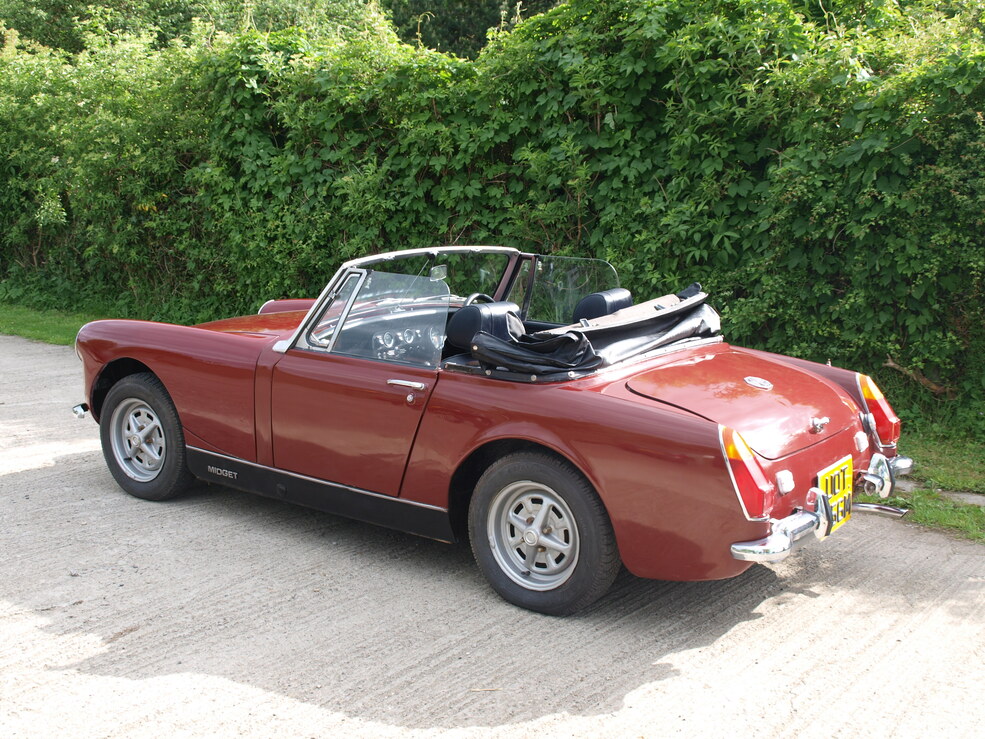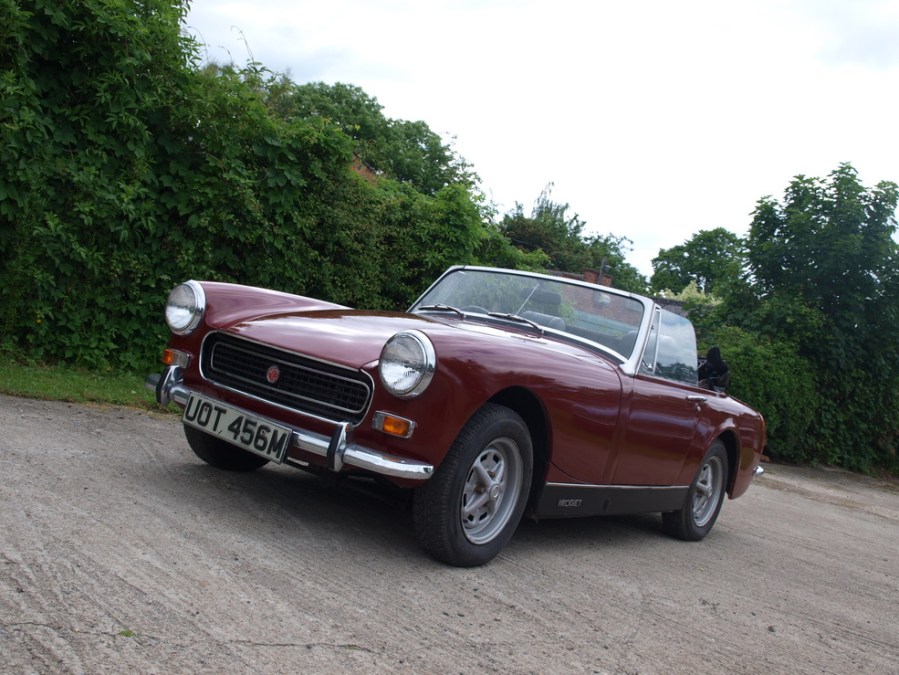For keen drivers who appreciate fingertip control, the MG Midget and Lotus Seven should be at the top of the shopping list.
You’ll find few classic car enthusiasts who would argue that the MG Midget was anything other than pin-sharp. And indeed, that direct feeling can have consequences in adverse conditions, as a number of drivers have discovered to their cost over the years. But it wasn’t the only product of the 1960s to offer such intuitive involvement with the driving process. The Lotus Seven, made famous through its association with 1960s culture in the shape of cult TV series ‘The Prisoner’, was a stripped down special of the type that former Austin Seven racers would have loved. It spawned many imitations; so much so that the market is swamped with Seven-a-likes today. But do they really offer a practical alternative to Abingdon’s finest?
MG MIDGET
The MG Midget has its roots in the 1957 Austin-Healey ‘Frogeye’ Sprite; a small sportscar developed from the running gear of the Austin A35 saloon car. That means a 948cc A-Series engine, rear wheel drive and a postage stamp-shaped footprint. Naturally, in-house competitor MG wanted a slice of the pie and the car was restyled in 1961 in a manner which aped the larger MGB project. Unsurprisingly, this was the point at which an MG derivative was launched – the original Midget barely differed from the Sprite upon which it was based save for a vertically slatted grille and MG badging. Throughout the ’60s, as the Sprite developed so did the Midget; bigger 1098 and 1275cc engines, quarterlights and more luxurious trim (If such a word can be used in connection with the Spridget family). The Sprite was discontinued in 1970; the final cars losing Donald Healey’s name in a bid to save a few pounds per car. The Austin Sprite was a slow seller so production space was given over to the far more popular MG model.

An interesting development for 1972 proved not to be as wise as people had thought. Part of the restyle was that the shape of the rear arches was modified; from square to round. However, the round wheel arch cars had reduced strength to the rear of the shell as a result, and after just three years production reverted to the earlier body. The round wheel arch cars are prized as a curiosity, but from a driving perspective offer nothing offer the more common shell.
In 1974 the Midget gained the same big polyurethane bumpers as its big brother the ‘B – a move which added some 55kg to the overall weight and meant that the 1275cc A-Series was no longer enough to give the Midget sporting performance. The fitment of the 1493cc engine from in-house rival the Triumph Spitfire meant that Midget performance could remain competitive until the model was discontinued in 1979. Indeed, despite the weight penalty it was quicker than its predecessor; able to crack 100mph for the first time.
The Midget can make an ideal starter classic – small enough for any domestic garage, easy to work on with a formidable parts supply industry dedicated to maintaining the marque. And with prices starting at just £1500, there’s never been a better time to buy.

LOTUS SEVEN
The Lotus Seven was launched in 1957 as a replacement for the Lotus Six. It was a small sports car -an entry level Lotus using a tubular frame inspired by the Eleven racer and humble Ford engines to create what many felt was the archetypal direct and light sportscar package. It was followed up with the Seven S2 and performance oriented Super Seven, before the launch of the Seven S3 in 1968. 1970 saw the launch of the fibreglass Seven S4 – which was set to be discontinued in 1973, had distributor Caterham Cars not bought the rights to the Seven from Lotus. A year later, Caterham reverted to the S3 specification, which has formed the basis of all Seven-a-likes since.
Caterham has since fitted all manner of powertrains into the Seven, ranging from the Rover K-Series to the Vauxhall redtop. More recently, the Superlight R500 exceeded 500bhp per tonne, and the SV offered more interior space by expanding the chassis in all directions. More recently Caterham has returned to its roots with the Suzuki 660cc-engined Seven 160.

In 1982, Chris Smith established Westfield Cars to build what were essentially copies of the Seven formula – so close that Caterham threatened litigation. Settled out of court; Westfield evolved its design into new range of its own, culminating in the fearsome SEiGHT -a Rover V8-engined derivative of its popular Sei model producing anything up to and over 300bhp. In a car the size of the average shoe, this was enough to crack 0-60 in well under four seconds despite questionable aerodynamics – typically Seven-a-likes feature some of the worst drag coefficients of any production car.
An alternative way to build a Seven is to see just how cheaply it can be done. Ron Champion published ‘Build Your Own Sports Car for as little as £250’ in 1996 – and the book led to a resurgence in the Seven theme. By taking a common Sierra as the donor and utilising as much of the single vehicle as possible, building your own Seven-a-like in the garage for a week’s wages was a viable option. Many of these so-called Lo-cost sportscars have been built to varying degrees of professionalism over the years, and these are arguably truer to the original Lotus concept than many of the official continuations.

VERDICT
If assessed on their individual merits, the Spridget and the Seven are both compelling classic alternatives for those seeking true driving thrills on a low budget. The Seven is a far more raw experience; offering nothing that might detract from the thrill of the open road, you feel you’re in a focused machine. The concept that it might be a car you’ve built from scratch will only strengthen the appeal of owning or running such a uniquely focused machine.
The Spridget – especially in MG form – benefits from a far larger enthusiast community, and a parts supply organisation that is second only to its big brother the ‘B. While you might struggle finding Seven bits owing to the marque’s mixed parentage, the Midget will be one of the simplest classics to keep going and puts parts supply for more modern MGs to shame.
The Midget is also undoubtedly the better investment, though a Locost or similar less well known Seven style car may be cheaper to buy in the first instance. If we had to choose, we’d go for the everyday usability of the Midget. But every time a Seven overtook, we’d look wistfully and wonder just what it would feel like to go that extra mile in search of driving bliss.






